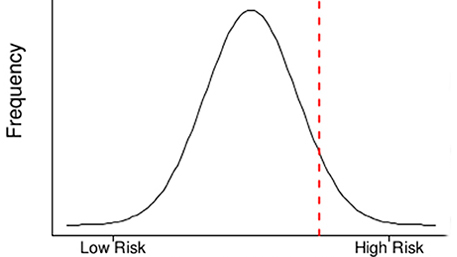

CMS NEWS
FOR IMMEDIATE RELEASE
August 31, 2020
CMS Acts to Spur Innovation for America’s Seniors
Proposed rule would bring new treatments, tests and medical technologies to Medicare beneficiaries faster
Today, under President Trump’s leadership, the Centers for Medicare & Medicaid Services (CMS) issued a proposed rule that unleashes innovative technology so Medicare beneficiaries have access to the latest, most cutting-edge devices. Today’s action represents a step forward that will help demolish the existing bureaucratic barriers that have created a “valley of death” for innovative products, resulting in lag times and lack of access for America’s seniors. This proposed rule delivers on President Trump’s direction to cut government red tape so seniors can access the latest treatments, which he issued in his Executive Order on Protecting and Improving Medicare for Our Nation’s Seniors.
“President Trump is delivering on the promise he made to Americans: a better, stronger Medicare program for today and the years ahead,” said U.S. Department of Health and Human Services (HHS) Secretary Alex Azar. “This new proposal would give Medicare beneficiaries faster access to the latest lifesaving technologies and provide more support for breakthrough innovations by finally delivering Medicare reimbursement at the same time as FDA approval.”
“For new technologies, CMS coverage approval has been a chicken and egg issue. Innovators had to prove their technologies were appropriate for seniors, but that was almost impossible since the technology was not yet covered by Medicare and thus not widely used enough to demonstrate their suitability for Medicare beneficiaries,” said CMS Administrator Seema Verma. “These efforts will ensure seniors get access to the latest technologies while lowering costs for innovators. Arcane bureaucratic requirements have no business preventing seniors’ access to a technology that might save their lives.”
Today’s announcement of the Medicare Coverage of Innovative Technology (MCIT) (CMS-3372-P) proposed rule, would provide Medicare beneficiaries access to the latest medical technology faster than ever. Under current rules, FDA approval of a device is followed by an often lengthy and costly process for Medicare coverage. The lag time between the two has been called the “valley of death” for innovative products, with innovators spending time and resources on FDA approval, only to be forced to spend additional time and money on the Medicare coverage process. This represents not only an unnecessary waste of resources for innovators, but also a significant problem for America’s seniors, who are prevented access to these potentially lifesaving technologies during the existing Medicare coverage determination process.
The MCIT proposal would eliminate this lag time for both seniors and innovators. It would create a new, accelerated Medicare coverage process for innovative products that the FDA deems “breakthrough,” which FDA approves on an expedited basis and could include devices harnessing new technologies like implants or gene-based tests to diagnose or treat life-threatening or irreversibly debilitating diseases or conditions like cancer and heart disease. Under the proposal, Medicare would provide national coverage simultaneously with FDA approval, for a period of four years. After that time, CMS may reevaluate the device based on clinical and real-world evidence of improvement in health outcomes among Medicare beneficiaries. This four-year timeline would incentivize the manufacturers of these breakthrough devices to develop additional evidence regarding the applicability of their products to the Medicare population, so they might continue Medicare coverage beyond the initial four years.
Importantly, because the MCIT rule would provide national Medicare coverage for four years, it would streamline identical local coverage decisions (LCDs), promoting equal access for seniors and helping innovators focus on getting their devices to patients and clinicians. Currently, under the LCD process, 16 Medicare Administrative Contractors (MACs) make Medicare coverage decisions on the local level – 12 for Medicare Parts A and B, and four for Durable Medical Equipment. Each MAC’s decisions apply only to that MAC’s jurisdiction. In the absence of national Medicare coverage for an innovative product, the product could be covered by a patchwork of LCDs, meaning a senior in one area could have access, while another senior in a different area would not. Additionally, to secure these LCDs, innovators can be forced to seek separate decisions from several MACs. MCIT breaks through this bureaucracy to help innovators and seniors alike. Under MCIT, breakthrough devices are given automatic national coverage for four years, simultaneous with FDA approval, meaning innovators do not need to seek coverage from the MACs.
This proposed rule would also allow Medicare to cover eligible breakthrough devices the FDA has approved for use in 2019 or 2020, giving Medicare beneficiaries immediate access to these innovative and potentially life-saving devices.
Additionally, the MCIT proposed rule would clarify the standard CMS uses to determine whether Medicare should cover a product, like a drug, device, or biologic. Under the Medicare law, the program can only pay for items or services that are “reasonable and necessary” for the Medicare population. If finalized, the MCIT proposal would clarify CMS’ definition of reasonable and necessary in regulation to give innovators a clearer understanding of CMS standards.
Today’s announcement also implements a major CMS effort to provide better customer service for innovators seeking Medicare coverage for their products. This takes the form of a coordinated, one-stop-shop internal structure that harmonizes the coverage, coding, and payment processes. This new internal coordination will help CMS better assist innovators as they seek to secure Medicare coverage and payment for their newly FDA-approved products. This effort includes a new pilot project under which knowledgeable CMS staff will guide innovators through the coverage, coding, and payment processes to cut through confusion and, ultimately, help Medicare deliver critical new technologies to seniors more quickly.
In addition to the proposed rule and the internal changes, CMS is also announcing that, in an effort to ensure certainty and clarity for stakeholders, the agency has significantly reduced a backlog of requests for National Coverage Determinations (NCDs), some of which have been on a list awaiting approval since 2014. In 2019 there were 11 NCD applications waiting for CMS review. By the end of 2020, CMS will have addressed nine of those 11. One of the remaining two is being handled by local Medicare Administrative Contractors (MACs) and the second is undergoing additional clinical trials.
Public comments on the proposed rule will be accepted until November 2, 2020.
The proposed rule (CMS-3372-P) can be downloaded from the Federal Register at:













































